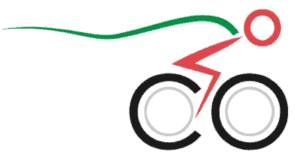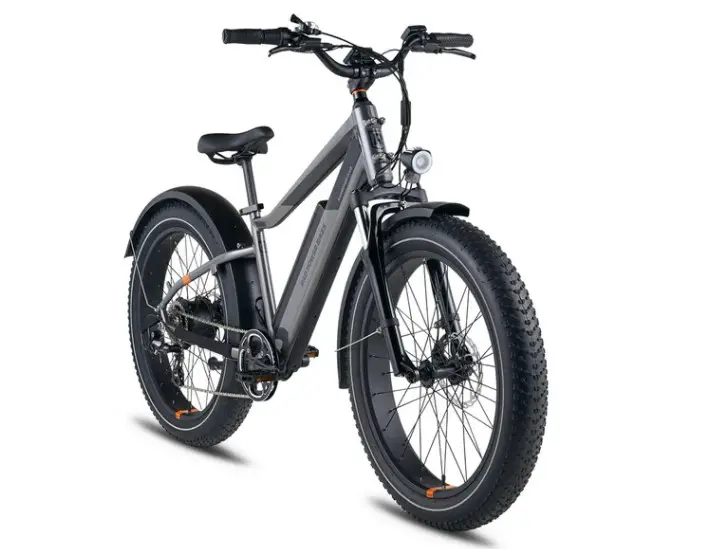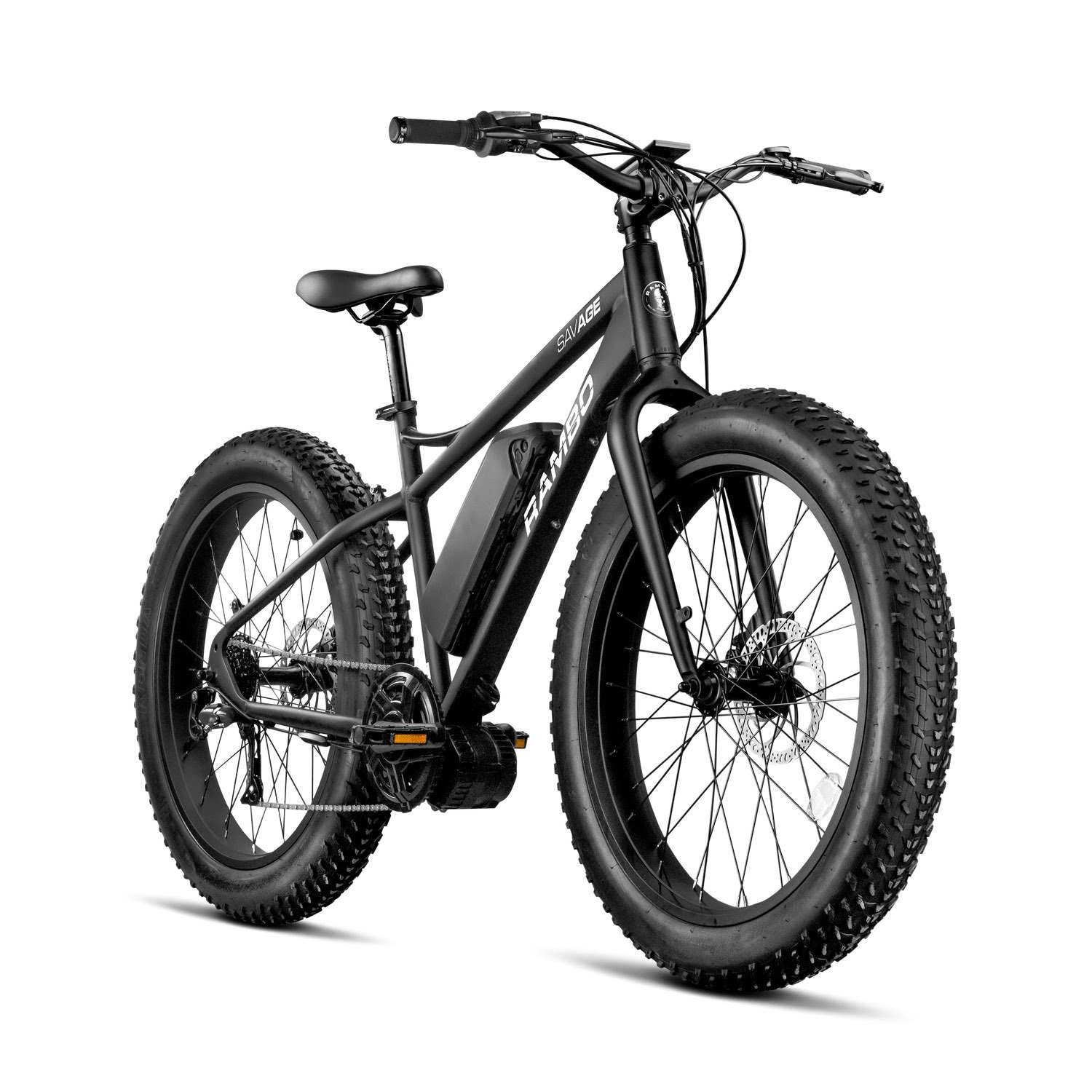E-bikes are tremendous at giving you the freedom to ride where, when, and how you want. Unlike a traditional bike, you’re not limited by steep hills or fatigue left over from a long day of work. You don’t have to budget your energy based on the length of your ride, forcing you to pedal slowly through sections you’d love to sprint on so that you can save energy for later. Instead, the motor on your e-bike can do some or all of the work for you, enabling you to ride on any trail at any time, spending energy as you see fit with the bike’s battery and motor in reserve.
Today’s e-bikes have motors in different sizes, ranging from 250 watts or less to 750 watts or more. In the US, 750 watts is a typical motor output for heavier e-bikes due to city and state laws capping the size of e-bike motors. But how powerful is a 750-watt motor? Can you rely on your 750-watt motor to push you up steep hills without pedal power? How fast can a 750-watt e-bike go? Let’s break down all of the details and go over exactly how much freedom you can expect from an e-bike with a 750-watt motor and whether you should be looking at an e-bike with one of these powerful assist drives installed.
Rad Power Bikes’ Radrover, Aventon’s Level and the Lectric’s XPremium bikes are among the most popular 750W hub-drive ebikes in the US.
The RadRover 6 Plus is a reliable, understated e-bike. It has an excellent reputation and an ever-expanding customer service. It offers great performance at a reasonable price.
The Rambo Savage or The Rooster are powerful 750W mid-drive ebikes that provide extra capabilities compared to hub-motors.
Electric bikes built for everything and priced for everyone. Shop Rad Power Bikes, America's #1 electric bike brand. Get out. Go further. Ride Rad.
This is an awesome entry-level 750W mid-drive ebike with plenty of torque to tackle the steepest of hills and roughest of terrains.
How Fast Can A 750 Watt E-Bike Go?
In the US, a 750-watt e-bike is usually electronically limited to 20 or 28 miles an hour. The e-bike can go as fast as you pedal, but the motor won’t provide any assistance once you pass the 20 or 28-mile-per-hour breakpoint.
This is due to laws that regulate the speed and power of e-bikes. These laws vary quite a bit based on the city and state that you live in, so you might be under more restrictive regulations that require you to get a less powerful e-bike or less restrictive regulations that enable you to ride an e-bike on streets and sidewalks with an even bigger motor.
There are a handful of e-bikes sold in the US that ignore these rules. Most of these bikes are designed for off-roading, meaning laws that govern the use of e-bikes on the street aren’t a big factor. These bikes tend to have bigger motors than 750 watts, however, so while they can often go faster than 28 miles an hour, they’re definitely not 750-watt e-bikes.
Okay, How Fast Can A 750 Watt E-Bike REALLY Go?
It’s possible to modify the controller on your e-bike and remove the top speed. If you do this, riding your bike on streets and sidewalks might be illegal. Before you modify your bike in this way, Be sure to understand your local laws and ride safely and responsibly to avoid tickets, fines, and an increased risk of injury.
There are two major types of e-bike motors on the market: hub motors and mid-drive motors.

Hub motors are mounted in the middle of your wheel. These spin the rear wheel directly and usually have limited gearing, if any. Hub motors often have higher nominal wattages than mid-drive motors, but their lack of gearing means that they have to be set up for a single, specific type of riding. A motor that’s designed for top speed will have notably less torque at lower speeds and will struggle to climb up hills, while a motor that’s designed for hills and low-speed torque won’t help you much once you get going over 20 miles an hour.
This means that the practical top speed of a 750-watt e-bike with a hub motor is fairly close to 28 miles an hour. 750-watt e-bikes are usually set up for speed more than torque, meaning that you’ll have to give them a bit of help when it comes to climbing hills. As long as you maintain speed, this isn’t a problem, but it does mean that you won’t be able to tune the motor for a higher top speed without dropping your climbing ability to unacceptably low levels.
A modified e-bike might be able to hit speeds of 30 to 35 miles per hour with appropriate gearing, an athletic rider, and favorable terrain, but you probably won’t be cruising around at more than 28 miles per hour on a regular basis.
How Fast Can A 750 Watt Mid-Drive E-Bike Go?
Mid-drive motors, on the other hand, add their power to your crank. This means that the output of a mid-drive motor is multiplied by the gears on your bike, allowing you to change the ratio of torque and speed to adjust for road conditions.

With this setup, 750 watts is a LOT of power. Cycling pros usually can output about 400 watts of rotational energy, and mid-drive motors add that power to the same place. This means that a 750-watt mid-drive e-bike can be faster than a pro rider and can comfortably break 30 miles an hour if you modify the controller.
In fact, with the limiter disabled, powerful mid-drive e-bikes are limited by their maximum rotation speed and the gear ratio of your bike as much as anything else. While factors like torque, drag and rolling resistance come into play, you’re likely to run out of gears and spinning speed long before these become the limiting factor.
It’s not unheard of for people with 750-watt mid-drive e-bikes to hit speeds of 40 miles an hour or more. This requires a somewhat specific setup and a bit of help from your legs, but you can definitely pass cars on city streets with a 750-watt mid-drive e-bike.
How Fast Are 750 Watt E-Bikes Allowed To Go?
Speed and power limits on e-bikes vary greatly by state and city. The industry has defined three classes of e-bikes.
Class 2 e-bikes are allowed to go up to 20 miles an hour but do not necessarily need to be pedaled.
Class 3 e-bikes can reach speeds of up to 28 miles an hour, but require the rider to pedal when the motor is engaged.
In California, people over 16 are allowed to ride Class 3 e-bikes on streets and most bike trails, while Class 2 e-bikes are virtually unrestricted. New York, however, does not recognize or allow standard Class 3 e-bikes, requiring riders to keep their bikes under 20 miles an hour. This means that you’ll want to check with both your city and state before purchasing a powerful e-bike or making any modifications. In general, Class 3 e-bikes are lightly restricted while Class 2 e-bikes tend to be allowed in most cities and states, but some exceptions exist.
If this article convinced you that a 750 Watt electric bike is what you need then you can check my article I wrote about the 22 Best 750 Watt Electric Bikes.


